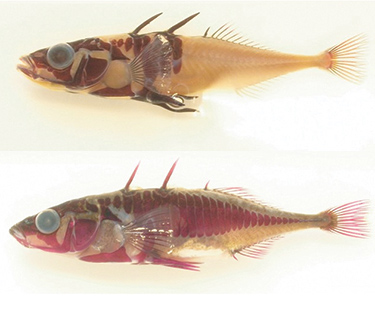After lake cleanup, fish evolve to an earlier version

A threespine stickleback in 1957 (top) and one in 2006.
Just 50 years ago, when Lake Washington was murky and festering with algae thriving on the millions of gallons of raw sewage being pumped into it, low visibility was great for the threespine stickleback: It made hiding from predators easy. But when Washingtonians initiated a successful cleanup of the lake, and visibility jumped from about 30 inches to 25 feet, the stickleback had a challenge: Evolve or die. The fish’s solution? Revert to an earlier design.
The stickleback—once covered from snout to tail with bony plating—had shed its armor over time. By the 1960s about 6 percent of Lake Washington sticklebacks were fully plated. As the lake became cleaner, the stickleback reverted to a version with full-body plating, according to a Fred Hutchinson Cancer Research Center study led by Cathy Peichel, a UW affiliate assistant professor. Today, about 49 percent of the fish are fully plated—35 percent are partially plated.
The adaptation likely happened because plated marine stickleback mingled their genes with unplated versions when a fish ladder was installed. Researchers believe the speedy adaptation—it appears much of the change happened in less than a decade—is a result of the fish’s rich genetic variation. Now it’s hoped the findings will help scientists learn more about human genetics and adaptation.